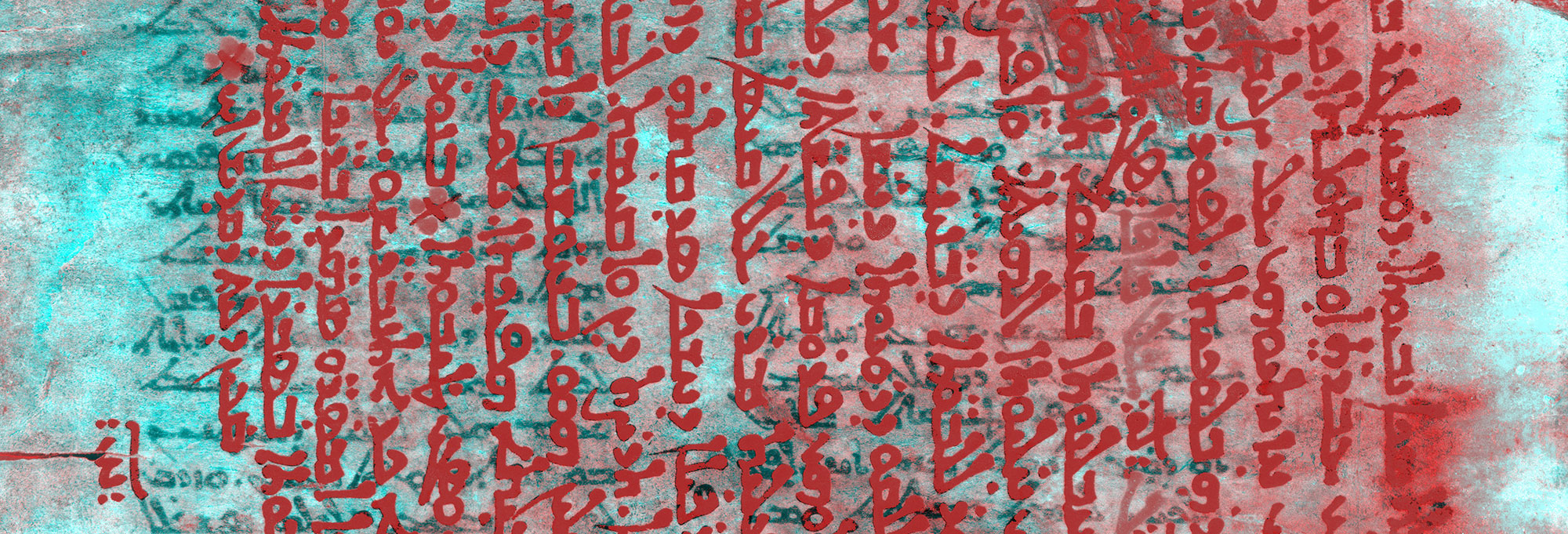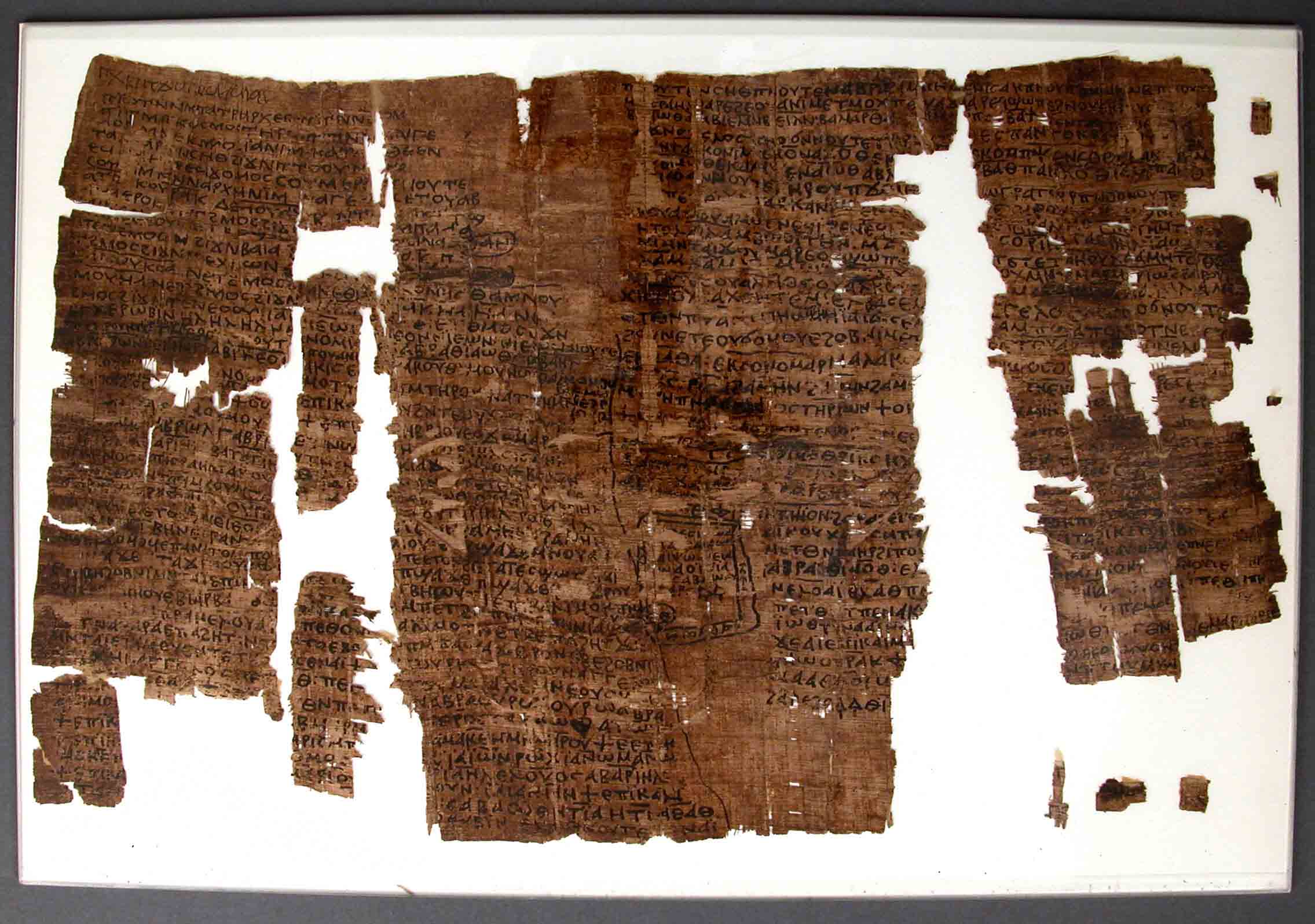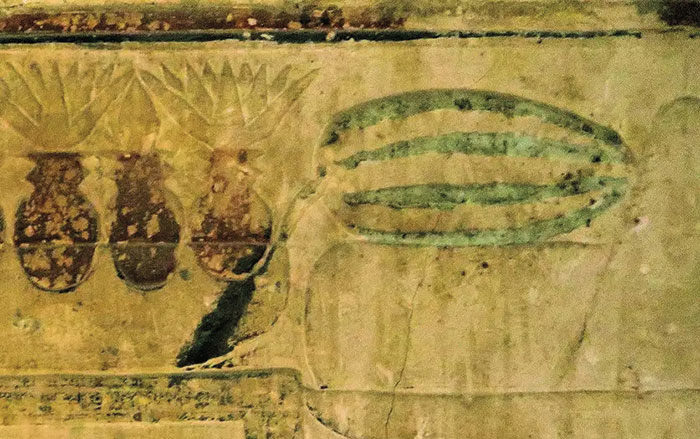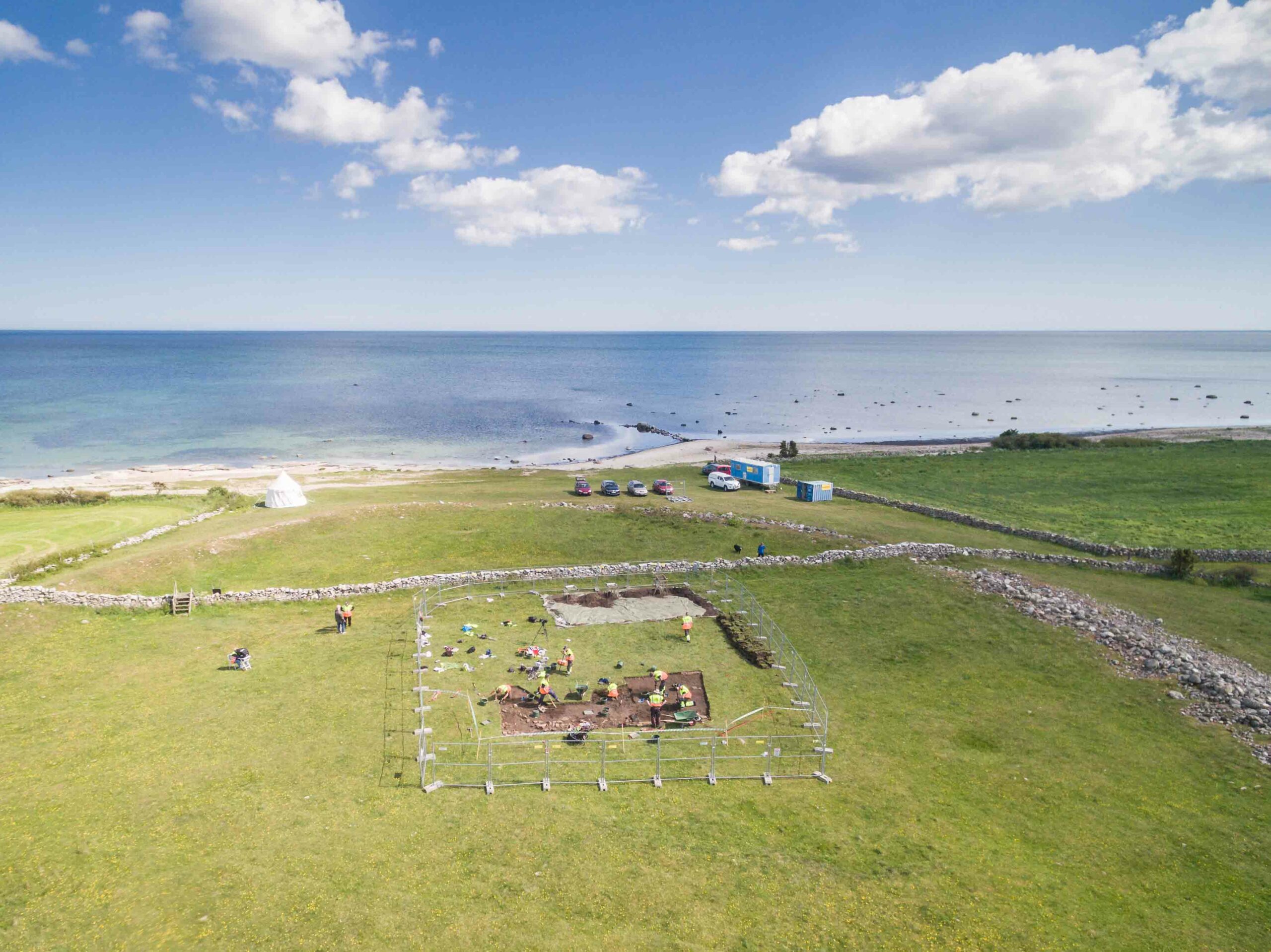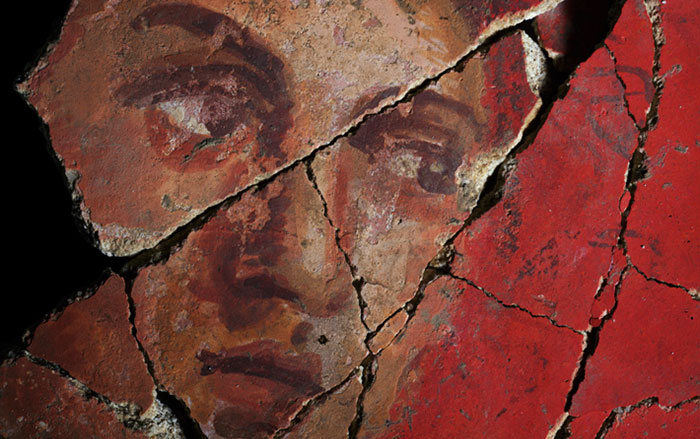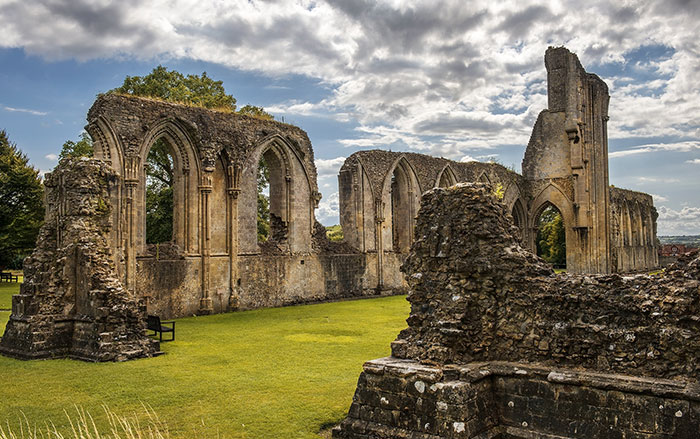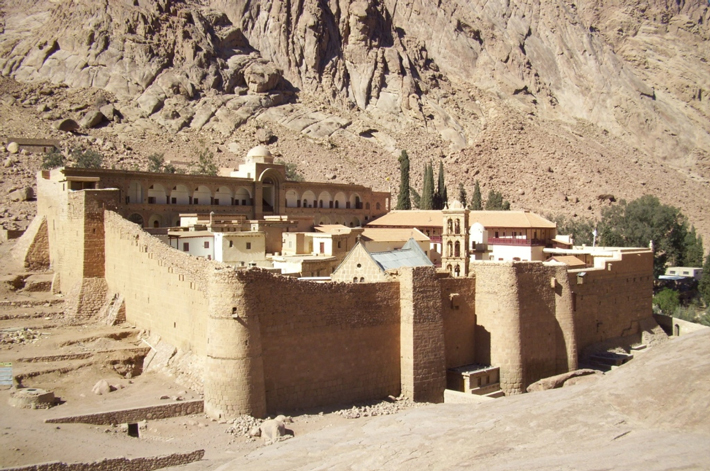
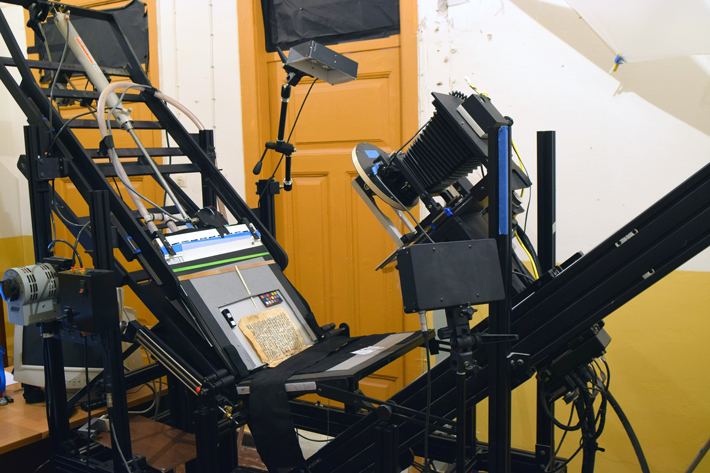
Sometime in the eighth century, a monk at St. Catherine’s Monastery in Egypt’s Sinai Peninsula was preparing to transcribe a book of the Bible in Arabic and needed fresh parchment. New parchment was an expensive commodity at the time and was difficult to obtain, especially for a humble monk copyist living in a remote desert monastery. Luckily for him, the venerable religious community had a massive library that included books that were no longer in use. These manuscripts, some written in extinct languages, or thought to be unimportant, were valued only for their potential as sources of recycled parchment. No one in the monastery would have thought twice, for instance, when, while searching for writing material, the monk plucked out of the collection an ancient Greek text that had gone unread for a generation or more. None of his brothers would have batted an eye as he used a knife to carefully scrape away the centuries-old ink. Soon, the words were gone and the parchment was ready for the monk’s fresh transcription of Bible verses. Today, erasing an ancient text seems an incalculable loss, but to the eighth-century scribe, it was an act of devotion and even a measure of progress—an obsolete text was gone, and a holy manuscript that would enrich countless spiritual lives was left in its place.
The original words on this reused text, or palimpsest, have been lost for over a thousand years. But now with the help of modern multispectral imaging technology, a team of scientists and scholars is able to peer through the manuscript’s visible ink and read the long-vanished text below. The library at St. Catherine’s contains well over a hundred such palimpsests, each one offering vivid new glimpses of the early Christian era. Later this year, after a large number of the palimpsests have been studied and translated by specialists, the monastery will make them available online, meaning that texts that have gone unread for a millennia can be pored over by scholars and interested laypeople from all over the world. “These are cultural treasures that are important to our common history,” says Michael Phelps, executive director of the Early Manuscripts Electronic Library, which works with the UCLA Library to coordinate the project. “We’re helping recover lost communities that made important spiritual and literary contributions, and allowing their voices to speak again.”


Tucked into a valley at the foot of Mt. Sinai, the fortified monastery of St. Catherine’s was built in the sixth century on the orders of the Byzantine emperor Justinian. Known officially as the Imperial Monastery of the God-Trodden Mount Sinai, St. Catherine’s is located on an especially holy site, where God was thought to have spoken to Moses through the burning bush. Archaeologist Peter Grossman of the German Archaeological Institute Cairo has conducted a survey of the site, and notes that thanks to its six-foot-thick granite walls that rise some 30 feet, the monastery was never destroyed, and so retains architecture from all phases of its development (including a small chapel that was converted into a mosque in the tenth century and is still used for special occasions). “St. Catherine’s is better preserved than other monasteries,” says Grossman. “Even the iron fittings of the doors in its walls and the original wooden gate of the main entrance are still in situ.” Over the centuries, the monastery attracted a steady stream of pilgrims who came to visit the holy sites around Mt. Sinai. They were welcomed and sheltered by a small community of monks who led lives of contemplation and prayer in the midst of the biblical landscape of the Sinai wilderness. Today, St. Catherine’s is the world’s oldest continually occupied monastery, and is home to around 25 Greek Orthodox monks, who observe rites that have continued uninterrupted within its walls for 15 centuries.
The monastery has a rich collection of icons and other religious objects, but it is most famous for its library, which, with more than 3,300 manuscripts, is second only to that of the Vatican in terms of the number of ancient texts it contains. While the Vatican library was assembled carefully over the centuries, St. Catherine’s collection is different, more eclectic. “The Sinai library differs from most libraries in that it grew organically to provide the monks with copies of the scriptures and books that would inspire and guide them in their dedication,” says Father Justin, who serves as the monastery’s librarian. Many of the monks and pilgrims who came to the monastery over the centuries left manuscripts as gifts, resulting in an especially idiosyncratic collection. In addition to important Christian texts, the library contains, for instance, one of the world’s earliest known copies of the Iliad.
Father Justin began a program of digitizing the monastery’s collection in the late 1990s. He knew, however, that he was unable to make a record of some of the most intriguing texts in the collection. Since the late nineteenth century, scholars had been aware that many of the works in the collection are palimpsests that conceal older texts (see “The Bible Hunters”). Over the years, scholars were able to read three of the palimpsests that were legible, but the vast majority remained invisible to the naked eye and went unstudied. In 1996, a Georgian scholar used ultraviolet light to read a Sinai palimpsest with an overtext in medieval Georgian. He found that the underlying text was written in Caucasian Albanian, and was the first example of a text written in this now-extinct language. It was an exciting discovery, but the process had drawbacks. “Prolonged use of ultraviolet light is a risk to both the eyesight of the scholar and the manuscript itself,” says Father Justin. The technique just wasn’t a practical way to read the library’s palimpsests.
EXPAND
The Bible Hunters
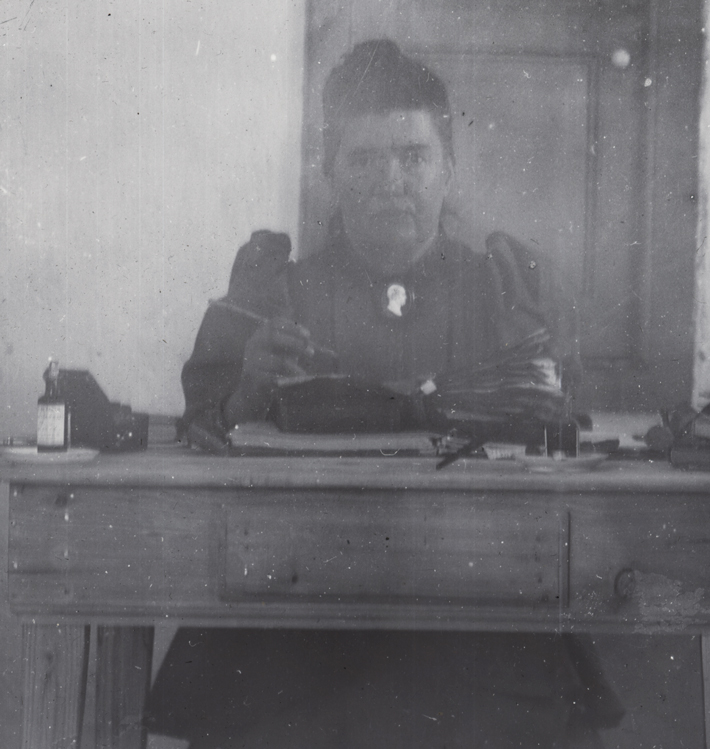
The study of palimpsests in St. Catherine’s library actually began in 1892 when an unlikely pair of trailblazing, self-taught biblical scholars arrived on camelback. At 49 years of age, twin Scottish sisters Agnes and Margaret Smith had made the arduous pilgrimage to St. Catherine’s Monastery in hopes of finding ancient versions of the Bible. They were aware that in 1844, German scholar Constantin von Tischendorf discovered a biblical manuscript in St. Catherine’s library dating to 325. The sisters knew that the text, called the Codex Sinaiticus, was the oldest known version of the New Testament. It had been central to reconciling differing versions of the Bible and had led to the creation of an authoritative Greek edition of the New Testament.
The Smith twins, both widows, were passionate about studying the oldest biblical texts. To that end, they had dedicated themselves to learning 12 different languages, including both modern and ancient Greek, medieval Arabic, and Syriac, a dialect of Aramaic, a Semitic language that was once spoken and widely used as a literary language across the Middle East. The pair arrived at the monastery as some of the most learned visitors the monks had had in decades.
The St. Catherine’s community was generally wary of outside scholars, not least because Tischendorf never made good on his promise to return the Codex Sinaiticus to the monastery. But unlike previous visitors, both women were fluent in colloquial modern Greek and so could speak with the Orthodox monks in their own language. Soon they were on friendly terms with the monastery’s librarian, and were allowed to investigate the collection, where the pair catalogued and photographed manuscripts and searched for previously unknown early versions of biblical texts. There, in an unused cabinet, Agnes found an Arabic manuscript describing the martyrdom of female saints. Though the text was not unusual, except perhaps for the somewhat racy language it used to describe the suffering of the saints, Agnes soon knew the manuscript was special. Under the Arabic text she could make out older writing in Syriac. She understood it was a palimpsest and with her command of Syriac, she knew the undertext was probably the Gospel of Mark.
The following year, the sisters returned to the monastery in the company of three other scholars to transcribe the manuscript. This time they were armed with a chemical reagent that could dissolve the overtext’s ink and render the undertext visible. After demonstrating the technique for the monastery librarian, Agnes was allowed to apply the reagent to some leaves of the manuscript on the condition that she preserve a few lines of overtext on each page. As much as one-sixth of the undertext was rendered visible by this method.
After several weeks spent transcribing the manuscript, the scholars found it was a complete Syriac version of the Gospels of Matthew, Mark, Luke, and John. Dating to the third century, it was the oldest such account in Syriac ever discovered. Agnes edited a scholarly edition of the palimpsest Gospels, now known as the Syriac Sinaiticus, and its publication brought the sisters worldwide celebrity. Biblical scholars welcomed the discovery, and were able to use the Syriac text to resolve discrepancies that existed between different Greek versions of the Gospels. According to University of Cambridge theologian Janet Soskice, author of The Sisters of the Sinai, a biography of the sisters, the twins made an enduring contribution to biblical scholarship. “Having the Syriac version of the Gospels was a major boost to understanding the history of the Bible,” she says. “Even today, scholars are very grateful to Agnes and Margaret.”
Father Justin learned of an ambitious scientific and scholarly effort under way from 1998 to 2008 to use multispectral imaging technologies to read the Archimedes Palimpsest, a tenth-century copy of the great Greek philosopher’s writings that had been overwritten by thirteenth-century Christian monks. He contacted the team decoding the Archimedes Palimpsest, and soon many of the scientists involved in the project agreed to again pool their resources to read the Sinai palimpsests. Organization of the project fell to Phelps and the Early Manuscripts Electronic Library, which uses digital technology to make ancient manuscripts available online to both scholars and the general public.
In 2011, the Sinai Palimpsest Project began imaging some of the 130 manuscripts in St. Catherine’s library that had been identified as palimpsests. Over the course of five years, the team visited the monastery 17 times. Before each session, University of Vienna medievalist Claudia Rapp, the project’s scholarly director, would consult with Father Justin, and together they would select important palimpsests suitable for multispectral imaging. The team would then subject each page to four state-of-the-art technologies. One method developed specifically for the project involves backlighting each page with multiple wavelengths that reveal where the ink of the undertext had eroded the parchment.
These images, once processed and viewed in combination, render long-lost words legible. The Sinai Palimpsest Project has now imaged some 6,900 pages, collecting an unprecedented amount of data on these formerly illegible or invisible manuscripts. “I call this process the archaeology of the page,” says Rapp. “Except as we dig we don’t destroy the layers that lie above, and we’re still able to make things visible that have been hidden for centuries.”

The effort is already giving the team new insight into the role St. Catherine’s played in the medieval world. While it is one of the world’s most famous Christian sites, scholars have an incomplete picture of it during this period. “The history of St. Catherine’s from the seventh to the eleventh centuries is little known,” says Rapp. “The palimpsests dating to this period give us a new picture of the role the monastery played in the Christian world.” The diversity of languages found in the palimpsests, a total of 10, show that pilgrims came to St. Catherine’s from all over the Middle East and Europe. In addition to more text in Caucasian Albanian, the team has discovered palimpsests in Ethiopic, Slavonic, Armenian, and, importantly, in Latin, some written in a style that was popular in Anglo-Saxon monasteries. “We were surprised by the number of Latin texts,” says Rapp. St. Catherine’s is an Orthodox monastery and was previously not thought to have had strong links to the Latin-speaking Catholic Christian world. But the palimpsests show that a number of pilgrims from Western Europe, perhaps from as far away as Britain, made the trek to the monastery and left behind manuscripts that were then recycled.
For Rapp, another significant discovery the project has made is that a number of palimpsests were written in a dialect of Aramaic known as Christian Palestinian Aramaic. This language vanished in the thirteenth century, and is poorly understood, largely because so few texts are known, making the discovery of these palimpsests especially exciting for scholars. “We have increased the number of known Christian Palestinian Aramaic texts by 30 percent,” says Rapp. “I have a colleague preparing a grammar of the language, and she’s very grateful she didn’t publish it before we found these palimpsests.”
The content of the palimpsests also offers a look at the diversity of manuscripts that were available to monks in the early medieval period. Some of the palimpsests contain biblical texts such as fifth- and sixth-century versions of Corinthians and the book of Numbers, but they also hold a number of secular works that monks could have consulted. The team has identified a variety of medical writings, including a treatise on medicinal plants, which contains a treatment for scorpion stings, the earliest surviving texts of Hippocratic medical works, and a previously unknown version of a list of medical terms.


Those works hint at how the monks may have understood and treated illnesses, a very practical dimension of their lives, but the team has also found evidence that at least some monks could have relied on the library for pleasure reading. They have identified a palimpsest containing the illustrated version of a secular fictional work, the oldest known non-biblical illustrated manuscript, perhaps suggesting that monks may have not confined themselves to religious reading.
Soon one of the palimpsests may even allow the team an intimate glimpse of the monks’ spiritual lives. In it they have discovered musical notations, likely for a liturgical chant, which are still being studied. Once they are deciphered, the team may be able to recapture the sounds of one of the ancient chants that were such an integral part of religious services at the monastery.
Twenty-three scholars are currently at work translating the palimpsests, but enough have been studied that it is now clear that St. Catherine’s library is the world’s richest source of Christian palimpsests. And the project has helped Father Justin and the monks of St. Catherine’s not just to recover lost history, but also to celebrate their faith. “The manuscripts are an inspiration to the monks who live here today,” says Father Justin, who finds the discovery of the Latin texts, in particular, very significant. “They show that there was travel and communication between East and West, at a time when scholars have presumed great isolation. This is an important example for our own times.”
Thus far the team has imaged 75 of the manuscripts previously identified as palimpsests. In the process, Rapp has newly identified at least 30 more palimpsests in the collection. She believes that still more of the books in St. Catherine’s library may have been written on reused parchment. There could be hundreds more palimpsests yet to be discovered, an invisible library that may hold as-yet-unknown biblical texts, or more manuscripts that illuminate medieval monastic life in this remote outpost of Christianity.
To learn more about the Sinai Palimpsest Project, go to sinaipalimpsests.org


